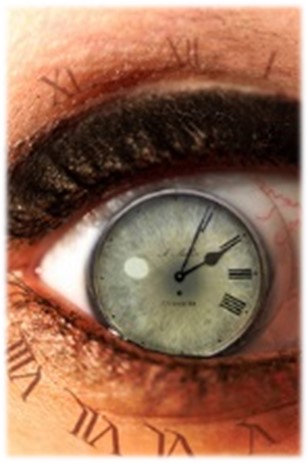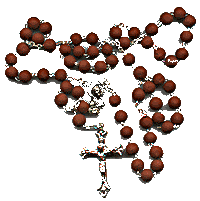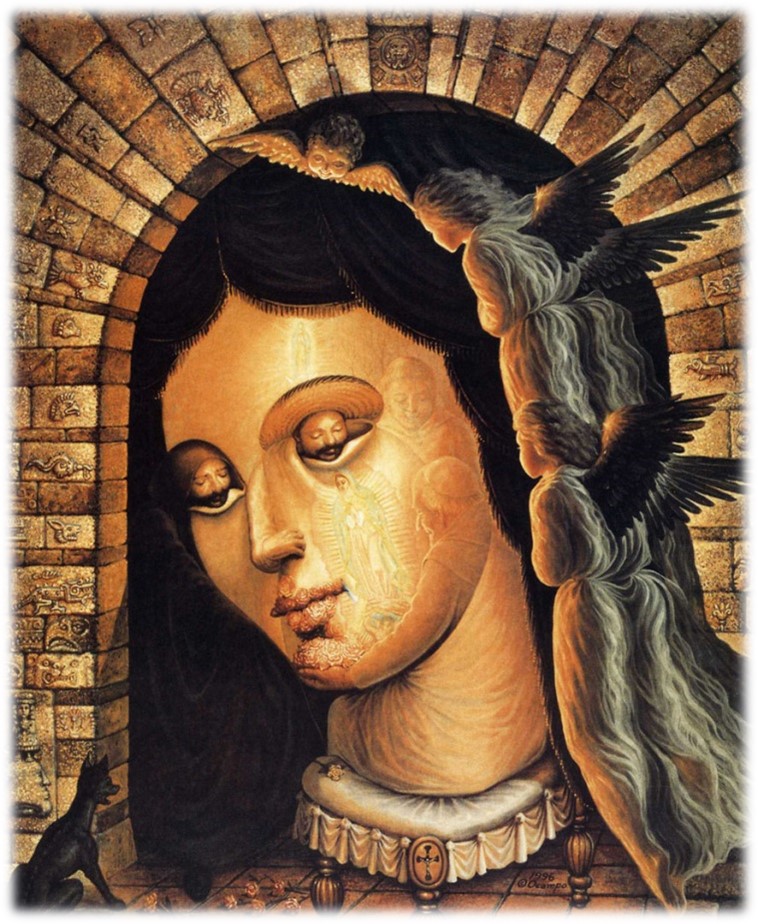“. . . our bodies cannot cope with this modern demand . . . we need to reflect on what we do and to where we are aimed. In one word: we need prayer.”
It may seem a banal statement to say that humanity is a part of nature, yet the consequences of this fact are not insignificant. The time we have in this life is limited: it lasts from conception to death. During each year we are affected by the changing cycle of seasons. During each day we are subject to the rhythm of sleep and wakefulness, e.g. ultradian rhythms which change with a frequency of about 90 minutes causing periods of increased or decreased activity even during sleep.
The need for prayer
The neglect to acknowledge these ultradian rhythms in modern life has turned out to be very fateful. Instead of giving in to the natural need to slow down, we try by every means possible to remain active, but our bodies cannot cope with this modern demand. So we lengthen the day, and use stimulants to keep up the pace.

Research has shown that with most cases of disorders linked to stress it is enough to restore the proper rhythm of the day to return to a mental balance. What’s more, work is more effective, if there is time for quiet. So much for research – for centuries the rhythm of the day has been preserved in the monasteries, where work is interwoven with prayer. Some companies have started using this naturally changing activity in the worker, providing opportunities for a break for meditation, yoga, etc., sometimes led by a coach. He trains the employee making them in the end more effective.
And so a person stands before a choice: either minimise their nature and complain about stress, or seek solutions to their problems among the current trends of spirituality foreign to Christianity, which – as experience has shown – may actually pose a threat to mental health. You may in the end exclaim with the psalmist: “Make me to know thy ways, O Lord; teach me thy paths”.
And so a person stands before a choice
Discover the Rosary
The Lord does not leave those who plead without aid. He knows well that we need moments of peace, to reach into the silence within us. He also understands that we need to reflect on what we do and to where we are aimed. In one word: we need prayer. And here we have much choice. We can decide what prayer we respond to the most. Depending on what we are experiencing, the most applicable maybe verbal prayer, another time the need to explore the word of God may be felt, or simply to persevere in the presence of God.
There are, however, prayers that are themselves very versatile, “proven” by the great saints and mystics. Such a prayer for Western Christians is the Rosary. Its characteristic feature is rhythmicity, the measured repetition of the Hail Mary. The very systematic recitation of the Rosary teaches the one who prays to deepen their prayer. Rhythmicity meets human physiology and facilitates quietening, and in the quiet the voice of the Holy Spirit can be heard. The Rosary can be verbal prayer, meditative and initiate contemplation.

Our Father . . . , Hail Mary . . . , Glory be . . .
The structure of the Rosary begins and ends with the crucified Christ, illuminating the road for us. It reminds, that God has called us with His great love, calls us to return, and Jesus is the beginning and the end. Repeatedly asking of God the Father (the Lord’s Prayer) highlights that the centre of our lives in God and only Him. The first three Hail Marys helps us realise that to encounter God we can only do so through faith, which gives rise to hope. When we believe that God is present all the time and wants our happiness, then we can only reply with the prayer of praise (Glory be) – on the model of Mary’s Magnificat, when Elizabeth spoke of Mary and God’s grace. Repeating the ten Hail Marys we contemplate the events of Jesus’ life, which are the backbone of our knowledge of the word of God.
You may also wonder about the meaning of the words of the Hail Mary, which takes its beginning from the dialogue of Mary with the Archangel Gabriel, where one “yes” of Mary had huge significance for our salvation history. We too can make a great change, saying to the Creator “yes”. This in turn means that we see His imprint in others, accept ourselves, stop being stuck in the past and we don’t set God tasks, expecting Him to realise our plans.
In the second part of the prayer we recognise our fragility, both spiritually and in body, which everyone, when with courage they face the truth about themselves, sooner or later will see. That’s why we ask Mary for help at that moment, and especially at the moment of death, where those on whom we count will no longer be able to accompany us: allowing that at the time of prayer that our hearts be filled with wisdom – the word of the Lord – just as Mary did, pondering in her heart His every word.
With the help of Mary
Padre Pio, John Paul II and other great faithful people have pointed to the Rosary, which teaches us to listen to the inspiration of the Holy Spirit. Modelling prayer on Mary, who was the greatest mystic, because she always lived in the presence of God. Praying on the Rosary can apply our lives, like tracing paper, to her life and check if her and our lives are similar. If we are sure that we are directed by Mary in this direction, then we are on the right road.
The fact that Mary is human, makes it easier to ask her directly for help. In human understanding God is so great and ineffable, that a person can have a sense of fear before Him, who is almighty.
Yet, Mary is different from us, in that God preserved her from all sin even before Jesus accomplished the work of salvation. In this way she is for us humans an archetype, a model, fully benefiting from the gift of redemption.
Mary cannot be neglected on the road, on which light becomes the ultimate goal. To understand this better let’s take a comparison in the realm of physics: in order to describe a phenomenon taking place on Earth we use specific patterns, laws. However, these same patterns cannot be applied to similar phenomena we have later found occurring in the cosmos. There, different theories apply. At some point one theory of patterns supersedes the other (i.e., crosses the threshold). This is a sort of meeting of the cosmos and earth. Just as Mary stands between God and people. What is great in human eyes is not necessarily great in the eyes of God, and vice versa. It teaches us also how we are to ask God. She did not dictate what Jesus had to do, but pointed to the problem, just as at Cana in Galilee. And she teaches how to trust God.

With this sort of confidence, we are prepared to fulfill our obligations, which after such prayerful focus will be marked by joy and naturally will be a continuation of prayer. When we give ourselves to quietness, we can do it with confidence that even in our sleep He blesses us.